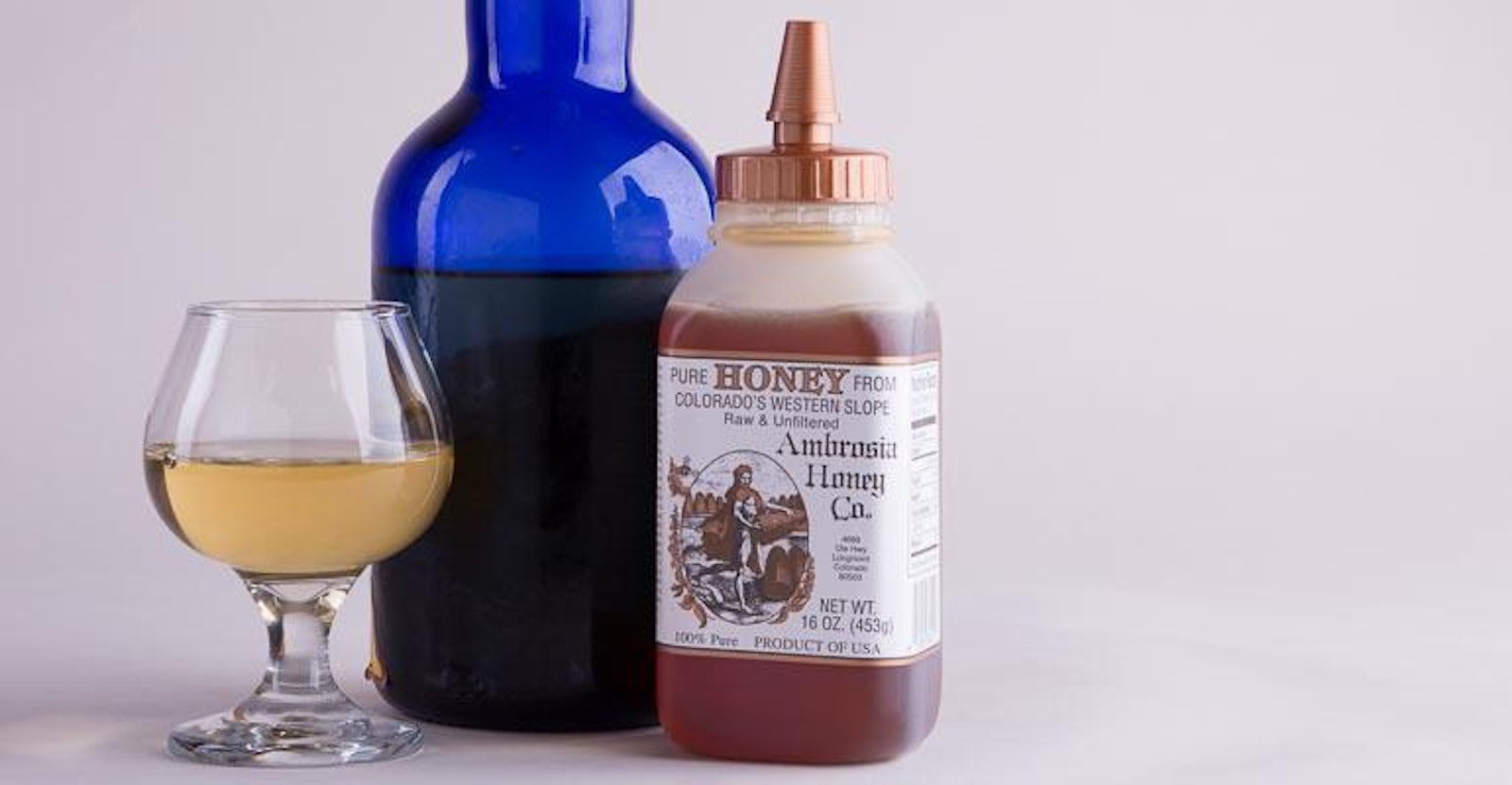I’ve made this everywhere from 3.5 to 8 percent ABV, with a variety of hops. This recipe is easiest if you keg and force carbonate and can easily be done in 5 weeks from making to drinking—pick your honey, pick your hops, and have fun.
OG: 1.035
FG: 0.998 (+/- 0.003)
ABV: 5%
INGREDIENTS
5 lb (2.3 kg) orange-blossom honey (with an additional 0.75 lb/340 g reserved for finishing)
5 gal (19 l) water (total volume will be about 5.25 gal/20 l)
Nutrients: 280 ppm yeast assimilable nitrogen (YAN). This is about 20 percent more nutrient than is required, but should give a good first batch. (For more about YAN, see “Mad for Mead, Part 2.”) The 20-liter volume ends up with nice numbers of nutrients since everything is in grams per liter.
30 g Fermaid-O
20 g Fermaid-K
4 g DAP
6.25 g Go-Ferm
1 g potassium metabisulfite at bottling
HOPS
1 oz (28 g) Galaxy pellets
1 oz (28 g) Citra pellets
1 oz (28 g) Amarillo pellets
DIRECTIONS
Mix the honey and water together. Fill your carboy to 5.25 gal (20 l) total volume and then add the Fermaid-O to some water, stir into a slurry, and mix. The Fermaid-O gives you about 100 ppm YAN of nutrient.
Mix the Go-Ferm with 3 fl oz/85 ml of water at 109°F (43°C). Once that is mostly mixed, leave the sanitized spoon in the mixture and sprinkle the yeast over the top. Put some plastic wrap over the top, let it sit for 15 minutes, then stir again, re-cover, and let sit for another 15 minutes or until the yeast is within 15°F (8°C) of the must. Add the rehydrated yeast to your carboy.
Ferment at 55–62°F (13–17°C). Make sure not to get above 68°F (20°C).
Once you start seeing little bubbles, it’s time for the staggered nutrient addition (SNA). This is generally within 24 hours, but sometimes as soon as 3 hours.
Do a simple 2-stage SNA. To prevent mead volcanoes, mix the nutrients with some must or boiled water before adding. (For more information about SNA, see “Mad for Mead, Part 2.”)
50% at the end of the lag phase—10 g Fermaid-K and 2 g DAP
50% at 33% sugar break—10 g Fermaid-K and 2 g DAP
Stir twice a day for the first 50 percent of the fermentation (2–5 days), until the gravity reaches about 1.015.
After fermentation, rack at least once, maybe twice. You want a very clear product at this point. If the mead isn’t very clear, rack again, and/or consider using something like Sparkolloid to clarify. You want all the yeast settled out so that when you back-sweeten with more honey, fermentation is less likely to start up again.
Once the mead is very clear, gently stir in the additional 0.75 lb (340 g) of honey (warmed up so it flows nicely), potassium metabisulfite, and hops. After a few days you should see a nice layer of hops on the bottom.
Wait 2–3 days, then rack into your keg (you’ll definitely want some sort of mesh or filter on your racking cane) and force carbonate to around 2.5 volumes of CO2.
YEAST
5 g Rhône 4600 Yeast
BREWER’S NOTES
I like the extra body the Rhône 4600 yeast gives, and it produces tropical fruit aromas. You can substitute any low nitrogen yeast: Lalvin ICV D47 is also a good choice.
Bulk age for a month and keg age for at least a week.

